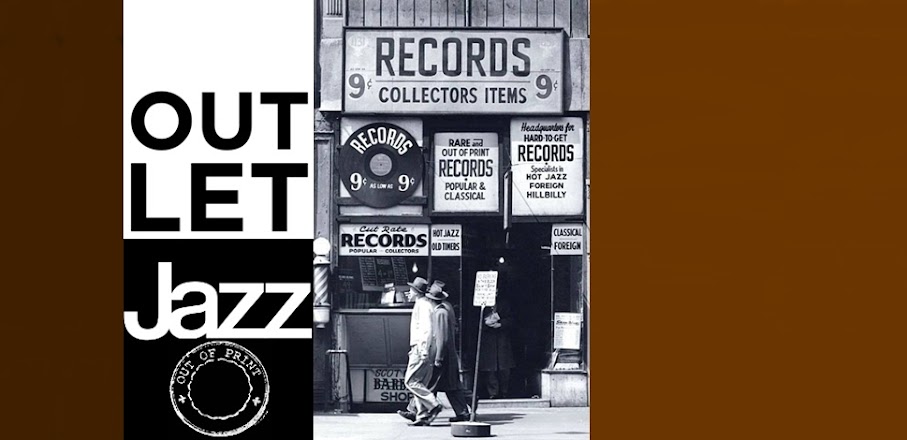Sandy Mosse
Relaxin' With Sandy Mosse
Sandy Mosse would like to live and work in Chicago.
He's been trying to do just that for years, yet his income is substantially less than that of performers with far less artistry.
The tenor man, now in his late twenties, has tried to capture a niche in jazz. By working as regularly as possible, he has become well known to jazz fans in Chicago. He has worked in dives and in plushly padded spas, for club owners who rarely appreciated his efforts. Believing intensely in the rewards —personal and economic— of working steadily, he has attempted to do so in recent years.
Sandy Mosse is known to Chicago jazz fans and to a handful of devotees in other cities. He has not recorded album after album, as have other tenor men in other locales. He has chosen to remain in Chicago and has suffered.
Born in Detroit, Mosse came to Chicago when he was 11. He brought with him some background on clarinet. At Chicago's Sullivan high school, he met pianist Lou Levy. Together, they worked in the bands of Jimmy Dale and Jay Burkhart. They spent hours listening to the explorations of Charlie Parker and Dizzy Gillespie.
In 1950, after having studied both clarinet and alto, Mosse switched to tenor. It was a case of finding the right sound.
Influenced by Lester Young, Stan Getz, and Al Cohn (primarily the latter, Mosse feels), Mosse has managed to weld an individualistic conception, a fiuency on the horn that is his own. His work is of value for several key reasons.
He is, above all else, a melodically-oriented musician. His work rarely borders on stridency. He is concerned with melodic content and the appropriate exploitation of that content. This does not mean that he is unaware of harmonic and rhythmic development; he is well aware of both and employs subtle patterns in his work. But to Mosse, the theme and variations are of equal importance.
This is Sandy Mosse's first LP as a leader. He has been one of the leaders of jazz in Chicago for several years, but has been unable to achieve the recognition he deserves. Perhaps this LP will serve that purpose. If it does, it will be one reward for a musician who has given much of himself to jazz. *Don Gold (liner notes)*
Many musicians on the 50s Chicago scene felt that Sandy Mosse (1929-1983) was among the most eloquent tenor men in jazz. But recognition and opportunity were lacking until, finally, in 1956 he signed with Argo Records. Relaxin' With Sandy Mosse, his only album as a leader, recorded in 1958, gave him the chance to be heard with an accomplished young quartet that included pianist Junior Mance, and with a string section background. Mosse showed his considerable potential and forceful approach, and though he admired many musicians, one was his idol. Al Cohn is the epitome of tenor players, he said. *Jordi Pujol*
Over the years, many jazz scribes have written that tenor saxophonist Sandy Mosse's sound was influenced by Lester Young. To me, that's not nuanced enough. Dozens of tenor saxophonists adopted Prez's easy-going style. I find that Mosse's true influence was Stan Getz. I can't think of any other player who comes as close to Getz's playing profile.
Getz, of course, was a disciple of Lester Young's approach, but he had his own forceful sound in the higher register. This is where Mosse also did most of his business. In 1958 and '59, Mosse recorded Relaxin' With Sandy Mosse for the Argo label in Chicago, giving us a chance to compare the two.
Sandy Mosse died in 1983 at age 54. *Marc Myers*
Side 1
1 - Fools Rush in
(Rube Bloom)
2 - I'm Old Fashion
(J. Kern)
3 - Birks Works
(Dizzy Gillespie)
Side 2
4 - Stella By Starlight
(Victor Young)
5 - Love is For The Very Young
(Dave Raskin)
6 - Speak Low
(Kurt Weill)
7 - My Man's Gone Now
(George Gershwin)
8 - Cocoanut Sweet
(Harold Arlen)
#1 to #3:
Sandy Mosse Quartet
Sandy Mosse (tenor sax), Junior Mance (piano),
Bob Cranshaw (bass), Marty Clausen (drums).
#4 to #8:
Sandy Mosse Quartet and The Bill McRea's Strings
Sandy Mosse (tenor sax); Eddie Higgins (piano);
Art Tabachnik, Carl Racine, George Palermo (violins); Harold Kupper (viola);
Harry Wagman (cello); Bob Cranshaw (bass); Marty Clausen (drums);
Bill McRea (arranger, conductor).
Recorded at Universal Studios, Chicago, Illinois,
September 5 (#1 to #3) and October 13 (#4 to #8), 1958



https://1fichier.com/?3yzfgskbxjegax6x2388
ReplyDeleteGracias Blbs por prsentarme a estos grades desconocidos.
ReplyDeleteThank you very much, blbs.
ReplyDeleteMuchas gracias,
ReplyDelete